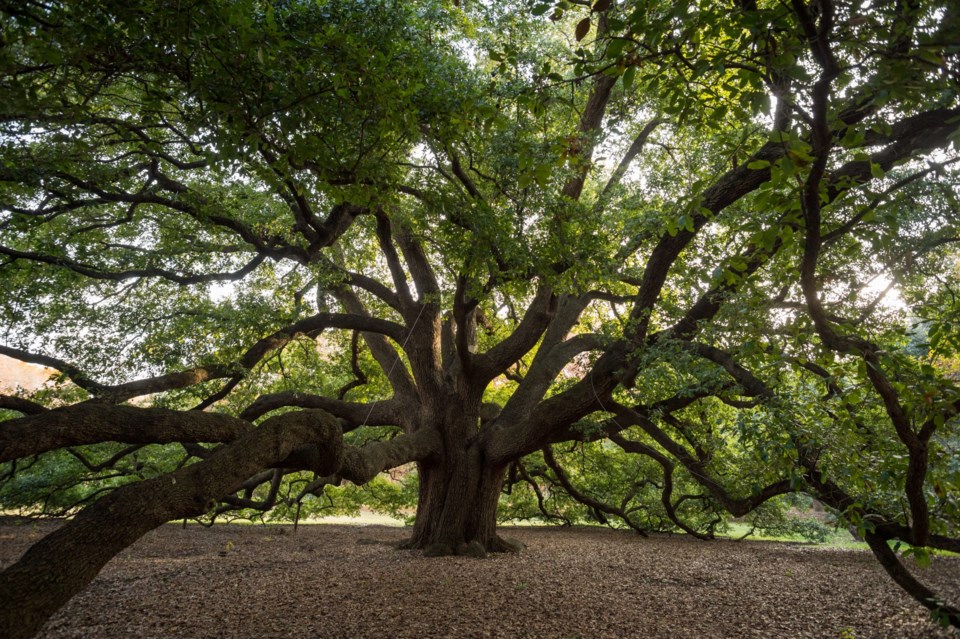Let’s face it: Texas is hot! Collin County summers can be tough with the blazing sun and the rising heat index. Sometimes residents end up spending more time indoors just to avoid the summer heat. But you don’t have to. Plant the right tree in the right spot to lower the heat in and around your home and get back outside.
“Start by planting one tree near your home,” says Brian Cox, district manager at Dallas’ Davey Tree Expert Company. “One shade tree, strategically placed, can cut your home’s energy bill. Plus, it will help clean the air, providing a healthier space to spend your time.”
When choosing a tree, you need to consider which ones are most suitable for this Texas climate. You want a tree that will thrive, giving it the best chance to tolerate diseases, pests and stay healthy.
“Trees offer so many benefits, but not all trees can survive in the hot, dry Texas soil,” said Cox. “Shade trees even protect the skin from sun exposure. All the more reason it is important to select the right tree and keep it healthy, so it can help keep you healthy too.”
Read more: Moving forward: Preserving Plano’s history
Cox and his team at Davey Tree recommend these top 10 large-canopied trees for the greater North Texas area. These trees are hardy, tolerant of urban and suburban conditions, low-maintenance and able to endure drought conditions.
- Shumard oak
The shumard oak offers a beautiful fall show, with leaves turning from fire red to red-orange. It prefers full sun and will grow to a height of 40-60′ at maturity. (Zones 5-9)
- Nuttall oak
This oak, like most, is tough yet stately. Best of all, this oak isn’t as common as other varieties, making it an unusual tree to plant. This tree can grow up to 100’ tall at maturity. (Zones 5-9)
- Overcup oak
The overcup oak grows in a uniform, oval shape, minimizing the need for pruning. It grows to a height of 45-70′ at maturity. (Zones 5-9)
- Sawtooth oak
The sawtooth oak is a fast-growing tree with jagged tooth-like leaves, true to its name. It grows to a height of 40-60′ at maturity. (Zones 5-9)
- Swamp chestnut oak
Despite the name, a swamp chestnut oak does not like wet roots. It prefers well-drained soil and is even able to grow in dry areas. It grows to a height of 60-100’ at maturity. (Zones 5-9)
- Monterrey oak
This native oak tree, which is also called a netleaf oak, is beautiful. Plus, it’s resistant to oak wilt and has very few problems. As a medium-sized oak, it grows to a height of 40-60’ at maturity. (Zones 6-9)
- Live oak
The live oak is a Southern classic and is often seen draped in Spanish moss. It can live to be hundreds of years old. It grows to a height of 40-80′ at maturity. (Zones 7-10)
- Bur oak
The bur oak makes a great urban tree as it tolerates pollution and heat stress well. It grows to a height of 70-80′ at maturity. (Zones 3-8)
- Bald cypress
This pyramid-shaped conifer is both sleek and tough. It has the unique ability to thrive in swamps and Texas’ dry climate. This tree grows to a height of 50-70′ at maturity. Be warned it does lose its needles in the winter. (Zones 4-10)
- Cherrybark oak
The cherrybark oak provides food for many wildlife species. It grows to a height of 60-110′ at maturity. (Zones 5-9)
Read more: Appreciate food and wine with the Dallas Arboretum!
When planting remember to pick a spot where your tree will have plenty of room to grow. Be sure the tree is planted at least 15-20 feet away from above-ground wires, underground pipes or wires, sidewalks, and permanent structures like your home or garage.
There are other excellent native and non-native ornamental trees that can also withstand heat and drought conditions. “If you have an idea of what tree you want, but aren’t sure if it will hold up in Texas, give us a call,” said Cox. “We can help you find the right tree and the right spot.”
Once the right tree planted, these watering tips will help your tree thrive!
- Spread mulch in a wide circle, 2 – 3” deep, around the tree to conserve water. Mulch should be pulled back from the trunk of the tree like a donut, not like a volcano. Recommended mulches include wood chips, shredded leaves, pine needles and compost.
- The best time to water is in the morning.
- Water slowly and deeply. Use a sprinkler, drip hose or garden hose on a gentle trickle, near the base of the tree, allowing water to soak 8-12” deep.
- Only water the area under the tree’s branches, known as the drip zone. Avoid directly irrigating the trunk.
- To make sure you’re not overwatering, place an empty soup can near the tree inside the sprinkler pattern and run the sprinkler very slowly over several hours until 2-3” has collected in the can.
For more information visit Davey.com/local-offices/dallas-tree-service




